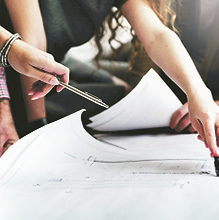Design with Purpose
Look for innovative ways to make sustainability profitable.

Everyone is stuck on certified building design and designing buildings using a checklist. What about good practice? What about designing reasonably, defensibly or even justifiably? All these words are synonyms for sustainable.
The U.S. is behind in its rational design practices. I recently read an article titled, Power-to-Gas May Solve Renewable Storage Challenge, that the German government has: “dedicated 80 percent of electricity production and 60 percent of primary energy be supplied by solar, wind and other renewable energy sources by 2050.” Read more about power-to-gas or The Power to Gas Association at www.europeanpowertogas.com, which has found ways to convert power into gas, store it and readily provide it when necessary.
We are professional designers; we take challenges and convert them into profitable outcomes. So when legitimate ideas get value engineered because the investors cannot see the profitability, we have to find innovative ways to still get the job done. Sustainably conscious just means we must understand there is more value in reducing a building’s impact on the environment, which will directly affect us.
In the coming year, I will focus on a series of articles that will illuminate sustainable projects from around the world, effective long after the red ribbon is cut.
Project profile: non-evasive treatment
Tyson Chicken Industrial Waste Lagoon, located in Berlin, Maryland, is a well-known food processing plant. Like most facilities, Tyson was penalized heavily by the local EPA and banished from discharging into the local waterway. To revitalize the waste water, the Tyson facilitators collaborated with Ocean Arks and John Todd to develop a non-evasive treatment. The system is made up of floatation devices that create bubbles in the water providing oxygen for the water to breath, a form of aerating the water. These devices, in addition with plant roots, fabric baffles, soil bank and open water, create flow direction allowing the water to move as it would in a stream or river. This process uses mechanics to speed up the filtration process, but a wetland would do the same at a slower rate. No chemicals necessary, hence, this is a sustainable solution.
Many designers would have opted to pipe this waste to a treatment facility, which would require energy and non-renewable resources to clean and filter. Instead, 25,000 native plants assisted in balancing the system; wild life accustomed to this habitat will also migrate. As a result, the contaminants begin to break down, and the Tyson lagoon has become a wastewater treatment facility with 95 percent reduced contaminants, 70 percent reduced energy use, approximately 3,500 kwh/day and 20 percent reduction in sludge production. This Lagoon is reported to have treated approximately 1 million gallons of water per day. Most importantly, it is suitable to discharge into the natural water way.
Until next time, think conscientiously.




